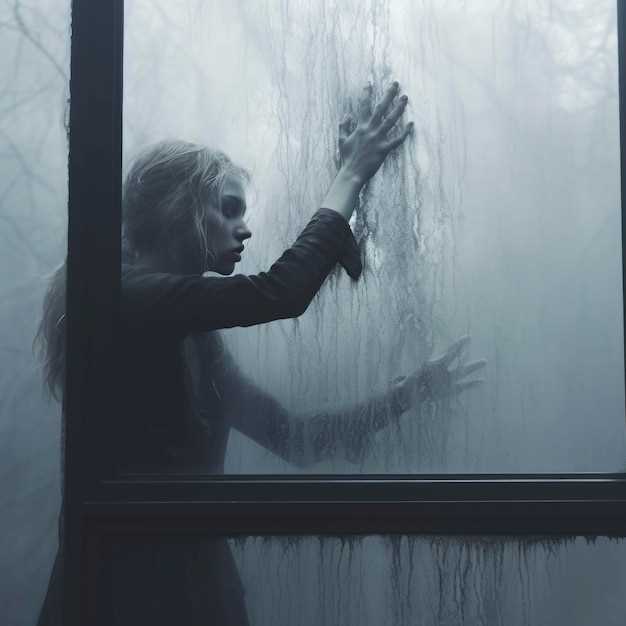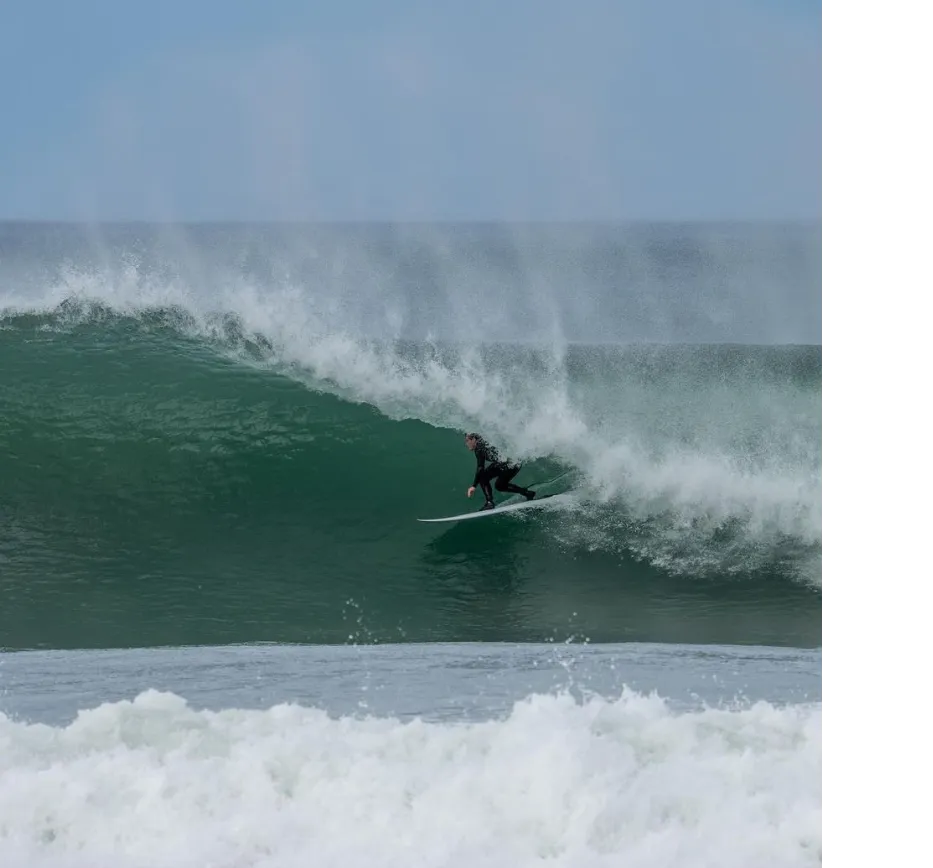
In this captivating exploration of the human psyche, we delve into the enigmatic allure behind our deep-rooted attraction to fear. As mysterious as it may seem, our fascination with being on the edge, feeling our hearts race, and our adrenaline rush is an undeniable facet of our human experience.
Embracing the Thrill: A Journey into the Unknown
Every time we willingly subject ourselves to the thrill of terror, we embark on a journey into the unknown. It is during these moments that we test our own limits, allowing the forbidden delights of fear to unravel before us. Through horror stories, adrenaline-pumping roller coasters, or spine-chilling movies, we seek to step beyond our comfort zones, pushing boundaries and challenging our senses.
The Undeniable Appeal: Unveiling Our Inner Desires
But why are we drawn to fear? What drives us to seek out experiences that make our hearts pound and our hairs stand on end? At its core, the allure lies in the exploration of our primal desires and the intense emotions that come with it. The rush we feel when the line between reality and the unknown blurs is an escape from the mundane, awakening dormant senses and reminding us of our vulnerability.
The Power of Fear: Why We Are Drawn to Scary Experiences
Delving into the depths of our psychology, we uncover the captivating allure of fear and its hold over our minds. Why do we seek out terrifying experiences, willingly subjecting ourselves to heart-pounding suspense and bone-chilling fright? This exploration aims to unravel the mystery behind our fascination with the adrenaline-fueled escapades that send shivers down our spines.
|
Instinctual Intrigue The primal part of our being is innately intrigued by fear, drawing us towards the unknown and the mysterious. It taps into our primal instincts, heightening our senses and evoking a surge of adrenaline that makes us feel alive. It’s as if the thrill of a terrifying experience offers a glimpse into a world beyond the ordinary, where our senses are heightened, and our boundaries are pushed. |
Fascination with the Dark In the recesses of our minds lies a fascination with the darkness and the macabre. We are intrigued by the forbidden and the taboo, finding a strange comfort in facing our fears head-on. Exploring the depths of our fears allows us to challenge our own limits and gain a sense of mastery over the unknown, empowering us in the face of adversity. |
The Psychological Rush
There is a unique psychological rush that accompanies frightening experiences. Fear triggers a primal response in our brain, releasing a surge of adrenaline and activating our fight-or-flight instinct. This surge creates a potent mix of emotions, from anxiety to exhilaration, leaving us on the edge of our seats and craving more. It’s the lure of this intense emotional rollercoaster that keeps us coming back for more.
Escapism and Catharsis
For many, the appeal of scary experiences lies in the temporary escape from reality they provide. Stepping out of our everyday lives and immersing ourselves in a terrifying world offers a release from the mundane and a chance to feel fully present in the moment. It allows us to temporarily shed our responsibilities and immerse ourselves in a thrilling narrative, providing a cathartic release for pent-up emotions.
Community and Connection
Engaging in scary experiences can foster a sense of community and connection, as shared fear can create strong bonds between individuals. Whether it’s during a suspenseful movie in a packed theater or participating in thrilling adventures with friends, the shared experience of fear can bring people closer together, forging lasting connections and unforgettable memories.
Ultimately, our innate fascination with scary experiences stems from a complex interplay of our primal instincts, psychological rush, desire for escapism, and the creation of shared connections. It is through the exploration of fear that we can truly understand ourselves and experience the powerful range of emotions that make us human.
Understanding the Psychological Thrill: The Science Behind Our Love of Fear
Delving into the intricacies of human nature, this section aims to unravel the psychological phenomenon that drives our inexplicable fascination with fear. By examining the underlying science, we will gain a deeper understanding of why individuals are drawn to experiences that elicit terror and suspense.
1. The Intriguing Interplay of Emotions
At the core of our love for fear lies a complex interplay of emotions that intertwine to create an exhilarating experience. Through an analysis of the psychological mechanisms involved, we will explore how fear, excitement, and anticipation work together to provide a unique and captivating thrill.
2. Unraveling the Biological Factors
Our innate proclivity towards seeking thrilling experiences may be underpinned by biological factors within our brain. This section will delve into the scientific research that illuminates how our neural pathways and physiological responses contribute to our love of fear, shedding light on the evolutionary significance of this seemingly paradoxical phenomenon.
- Exploring the role of adrenaline and cortisol in heightening our sensation of fear
- Examining the impact of neurotransmitters, such as dopamine, on our perception of fear as pleasurable
- Uncovering the influence of genetic predispositions on the extent to which individuals seek out fearful experiences
3. The Psychology behind Thrill-Seeking Behavior
Why do some individuals actively pursue fear-inducing activities while others avoid them? This section will explore the psychological motivations behind thrill-seeking behavior, including the role of personality traits, cultural influences, and the desire for a sense of control in shaping our affinity for the thrill of fear.
- An examination of how sensation-seeking personality traits correlate with our love of fear
- Understanding the influence of cultural norms and societal conditioning on fear-seeking behavior
- Exploring the concept of “managed fear” and its role in providing a simulated sense of control
By delving into the science that underpins our love of fear, this section seeks to shed light on a topic that continues to captivate and intrigue our minds. By gaining a deeper understanding of the psychological thrill, we can begin to comprehend the intricate mechanisms that drive our fascination with fear.
The Appeal of Horror: Unveiling the Deep-rooted Human Fascination with Fear
Delving into the enigmatic world of horror, one encounters a captivating phenomenon that has mystified and perplexed humanity throughout the ages. The allure of the macabre, the thrill of the unknown, and the exhilaration of terror have fascinated individuals across different cultures and generations. This essay aims to unravel the intriguing aspects behind our deep-rooted human fascination with fear, exploring its psychological underpinnings and shedding light on the intrinsic appeal that horror holds for us.
The Innate Curiosity for the Dark Side
Human beings possess an inherent curiosity that drives them to explore and comprehend the world around them. This inquisitive nature extends not only to the realms of beauty and happiness but also to the darker aspects of human existence. Just as humans strive to understand joy and love, they are equally drawn to comprehend fear and terror. The vast array of horror literature, movies, and haunted attractions stand as testament to our unrelenting fascination with the macabre.
The Cathartic Release of Emotions
Within the realm of horror, individuals find a unique avenue to experience and release intense emotions in a controlled environment. The adrenaline rush triggered by fear can be cathartic, freeing individuals from the anxieties and stress of daily life. This controlled emotional release allows for a sense of relief, allowing individuals to confront their deepest fears from a safe distance.
- Embracing the thrill of a horror movie, individuals can experience a rollercoaster of emotions, from anticipation and suspense to shock and surprise.
- Engaging with horror literature enables readers to delve into the darkest recesses of their imagination and confront their deepest fears.
- Visiting haunted attractions provides a simulated environment where individuals can willingly subject themselves to fear, knowing that it is temporary and within their control.
By experiencing fear in a controlled context, individuals can navigate the complex terrain of their own emotions and achieve a cathartic release that is both thrilling and rewarding.
In conclusion, the appeal of horror lies in its ability to captivate and enthrall us, offering an avenue to explore the unknown depths of human existence. Through its innate curiosity and cathartic release, the fascination with fear remains deeply rooted within the human psyche. As we unravel the psychological underpinnings behind our love for horror, we gain a deeper understanding of our complex nature and the intricate relationship between fear and fascination.
Fear as Entertainment: Exploring the Cultural Phenomenon of Scary Movies
The allure of fear and the thrill of being scared have captivated audiences for centuries. In the realm of entertainment, scary movies hold a unique position, offering viewers an adrenaline rush and a sense of excitement that cannot be replicated in any other genre. This article delves into the cultural phenomenon of scary movies, examining their enduring popularity and the psychological factors that make them such a captivating form of entertainment.
Scary movies, also known as horror films, have become an integral part of popular culture, captivating audiences across the globe. These cinematic experiences have the power to evoke intense emotions, ranging from fear and suspense to excitement and relief. The cultural fascination with scary movies can be attributed to their ability to tap into our primal instincts and the deeply rooted human fascination with the macabre.
At its core, the popularity of scary movies can be seen as a testament to the human desire for thrill-seeking and the need to confront our deepest fears in a controlled environment. By willingly subjecting ourselves to the terrifying events unfolding on screen, we experience a sense of catharsis, releasing pent-up emotions and confronting our own anxieties. This cathartic experience can be both captivating and transformative, offering an escape from daily life and allowing us to explore the darkest corners of our imagination.
Furthermore, scary movies serve as a reflection of cultural fears and anxieties. From supernatural creatures to deranged serial killers, the monsters depicted in these films often symbolize societal fears and the unknown. By confronting these fears through the medium of film, we gain a sense of control and empowerment over the things that scare us. This psychological aspect of scary movies further fuels their popularity and contributes to their cultural significance.
It is worth noting that the appeal of scary movies extends beyond individual psychological factors. These films foster a sense of communal experience, bringing people together to share a collective adrenaline rush and emotional journey. From packed movie theaters to horror movie marathons, the shared experience of watching scary movies can create a sense of unity among viewers, further enhancing the cultural phenomenon associated with these films.
In conclusion, scary movies have evolved into a cultural phenomenon, offering audiences a unique form of entertainment that taps into our primal instincts, explores our deepest fears, and reflects societal anxieties. Through their ability to provide both thrill and catharsis, scary movies continue to captivate and enthrall audiences, making them an enduring and significant part of popular culture.
Fear and Adrenaline: Examining the Physical and Emotional Reactions to Terrifying Situations
Delving into the intricate realm of human psychology, this section unravels the enigmatic relationship between fear and adrenaline, shedding light on the complex physical and emotional responses that arise when facing frightening scenarios.
Understanding the Physiology of Fear
When confronted with terrifying situations, the human body undergoes a remarkable transformation. The amygdala, a small almond-shaped structure in the brain, plays a central role in processing fear. It receives inputs from sensory systems, such as the eyes and ears, and triggers a cascade of physiological changes. As adrenaline surges through our veins, our heart rate increases, blood pressure rises, and breathing becomes rapid and shallow. The muscles tense, readying us for flight or fight. This intricate response, often referred to as the “fight-or-flight” response, prepares us to confront or escape from potential threats.
The Entangled Web of Fear and Emotion
In addition to the physical changes, fear also elicits powerful emotional responses. Feelings of apprehension, anxiety, and unease surge within us, altering our perception of the world around us. The mind is engulfed in a whirlwind of emotions caused by the anticipation of danger. Yet, despite the unpleasantness, many individuals find themselves irresistibly drawn towards these spine-tingling experiences. The intense rush of adrenaline and the emotional rollercoaster evoked by fear can be an addictive cocktail for some, leaving them craving more.
However, it is important to note that the relationship between fear, adrenaline, and emotional responses is complex and highly individualistic. The intensity and duration of these reactions can vary greatly from person to person, depending on factors such as past experiences, personality traits, and cultural influences.
By examining the physical and emotional responses to scary situations, we begin to unravel the profound allure of fear. Understanding these reactions sheds light on our fascination with being scared and offers valuable insights into the intricate workings of the human psyche.
The Cathartic Effect: How Facing Our Fears Can Lead to Personal Growth and Empowerment
Fear, an emotion often associated with distress and unease, can surprisingly serve as a catalyst for personal growth and empowerment. By confronting our fears head-on, we embark on a transformative journey that enables us to break barriers, foster resilience, and unlock new potentials.
Within the realm of fear lies an untapped source of personal development, where confronting our deepest anxieties can empower us to overcome limitations and discover hidden strengths. The cathartic effect of facing our fears provides a unique opportunity for self-discovery and growth, as it requires us to push beyond our comfort zones and challenge the boundaries we have set for ourselves.
When we confront our fears, whether they be physical, emotional, or psychological, we gain a new perspective on our capabilities and limitations. This process allows us to recognize the inner strength and resilience that resides within us, fostering a sense of empowerment that transcends the fear itself. By embracing the discomfort and uncertainty that come with facing our fears, we prove to ourselves that we are capable of handling adversity and growing from it.
Moreover, the act of facing our fears can lead to personal growth by expanding our horizons and broadening our experiences. It encourages us to step outside of our comfort zones and engage in new activities or confront unfamiliar situations. In doing so, we develop a greater sense of self-awareness, adaptability, and confidence, which can enhance our overall personal growth and empowerment.
Ultimately, the cathartic effect of facing our fears goes beyond merely conquering them; it empowers us to seize opportunities, embrace challenges, and strive for personal growth. By confronting our fears head-on, we break free from the constraints that fear imposes upon us and unlock a world of possibilities. It is through this journey that we not only grow as individuals but also inspire others to embark on their own path to self-discovery and empowerment.
Fear’s Dark Side: The Potential Dangers of Excessive Exposure to Fear-inducing Content
Unveiling the perils lurking within the thrill of fear, this section delves into the potential risks associated with excessive engagement in content that stimulates fear. While the fascination with being scared may offer a temporary sense of excitement and adrenaline, it is crucial to recognize the negative impacts that prolonged exposure to fear-inducing content can have on our psychological and emotional well-being.
Psychological Toll on Mental Health
As humans, we possess a complex psychological landscape that interacts with external stimuli, including fear. When confronted with excessive fear-inducing content, our minds are pushed beyond their natural limits, potentially leading to negative consequences. Increased exposure to fear can intensify feelings of anxiety, stress, and paranoia, triggering a detrimental impact on mental health. Moreover, prolonged exposure to fear may impair our ability to remain calm and composed, disrupting our cognitive functioning and decision-making capabilities.
Emotional Desensitization and Diminished Empathy
Continual exposure to fear-inducing content has the potential to desensitize individuals emotionally, numbing their natural responses to fear and apprehension. This desensitization can result in reduced emotional sensitivity towards others, diminishing empathy and compassion. Over time, excessive engagement with fear-focused media may lead to a disconnect from reality and a diminished ability to relate to others, ultimately eroding our social fabric and inhibiting meaningful interpersonal connections.


